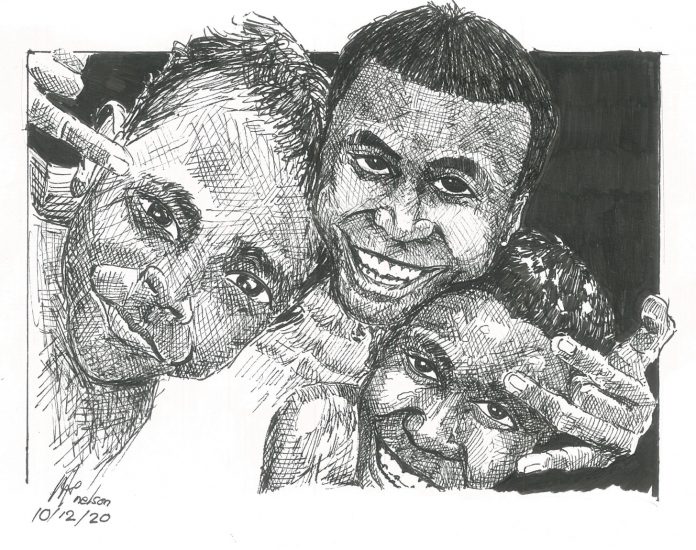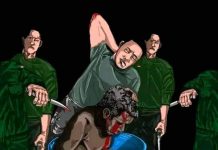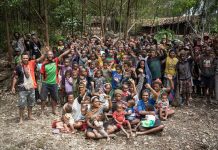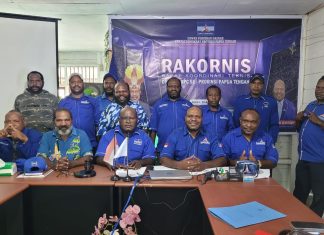This letter was sitting in our draft from a while ago to respond to the deaths of clergy members in Papua, but with recent developments we thought it was worth updating and sending.
There are numerous ways to discuss the deaths of pastors in Papuan communities. That it is inevitable in light of the escalation of conflict. That statistically, it makes sense; too many state apparatus were deployed to Papua last year (in what may seem like small numbers but constantly). All those deployments are charged with violent potential. All that aggression had to eventually display itself somewhere. Indonesians have the saying sedikit demi sedikit lama-lama menjadi bukit — over time, from little things, big things grow. It’s an approach that works to save money, it is also true for the state apparatus. What we are witnessing with horror is the consequence of that process, wherein the accumulation of deployments result in clandestine civilian deaths. We really wish the government would just announce that they are at war with Papuans. Please bear with us as we explain this step by step.
Beyond the tragedies of individual lives lost, we need to also talk about what this conflict means for their community. And that is one way to interpret this whole situation: this is an attack on community. It is bleak but it conveys an accurate picture of what we are trying to say when we piece together the deaths of pastors and the continued displacement of people. How are we supposed to address the refugees and their silent deaths without speaking of their communities? How else are we to articulate the trauma these deaths and displacement would cause in Papua? How else are we to think of the empty spaces these deaths leave in the communities they left behind? So yes, focusing on the individual deaths in Papua is as important as reflecting on what these deaths mean to communities.
Let us begin by talking about the death of Rev. Yeremia Zanambani in Hitadipa, now that more details have come to light. Soldiers shot and stabbed him, and left him to die. Miriam, his wife, found him as he was dying, alone, in his pigpen. She ran home to get someone who could help her to carry him home. It was an impossible task, people were too afraid. He did not survive the night. This was not an isolated incident, neither was the death of Rufinus Tigau. Tigau was a catechist and he was shot for suspicion of being part of the separatist movement. The suspicion was disproven and therefore, to quote Suara Papua, Rufinus Tigau was shot for no reason.
[TW: graphic description of violence. If this would upset you, you need to skip this paragraph. In our previous newsletter we speak of how the death of Rev. Zanambani is a sign of conflict escalation. But if you read the report recently issued by the Humanitarian Team for Papua (Tim Kemanusiaan untuk Papua), it is clear that his death is also part of a more general escalation of conflict in the region. (If you read Indonesian, you can download and read the report for a detailed timeline of the crisis in Intan Jaya). A few weeks after it was launched, we found an answer to one of the mysteries referred to in the report. The mystery concerns the disappearance of Apinus and Luther Zanambani. They were relatives of Rev. Zanambani and two of them disappeared in April 2020. The army recently confirmed that they were tortured to death during an interrogation. To hide evidence, the men incinerated their bodies and disposed their ashes in a river. When we speak of Papuan Lives Matter, this is partly the reason why. Sometimes Papuans evaporate as if they never existed, and the rest of us have to scramble for proof that they ever lived.]
It is not enough to talk about these deaths as events, we also need to talk about what it reflects about the wider situation. We are not saying that their lives matter more because they were members of the clergy. However, analyses of their deaths should keep in mind the integral function of the church and its leaders in Papua. Churches are communities and they keep communities together. They also connect Papuans in this community to a world beyond themselves. When their workers are targets to these kinds of incidents, what happens to the rest of the community? When they die, from whom are you to ask for consolation and support? If your church is empty and the congregation damaged, from what well are you supposed to get strength? With those considerations, while we can offer you a rational and logical reading of this, we won’t. The abrupt deaths of church workers are emotional affairs.
Deepening the crisis in Hitadipa is the displacement of people because of the incident. The community left behind have left their houses, leaving some villages empty while its inhabitants scrambled for safety. The report from the independent Humanitarian Team for Papua notes that at least 466 people have fled deeper into the jungle or neighbouring towns. During the public launching of the report, Harris Azhar spoke of the persistent attack on civilians. (Again, if you can, you really should read the report.)
We bring up that number because we want to emphasise that as people scatter, communities are broken and homes are left behind. We remind you again that in the Indonesian media, the insurgents are often portrayed as transient people. And because of that home serves an additional function; it is a way for Papuans to ‘prove’ that they are not militias. But recent events have deprived more and more Papuans in the hinterland of this. In the absence of home, how is a Papuan supposed to prove that they are civilians? That they are innocent and therefore in the twisted logic of Indonesians ‘do not deserve to die’?
There are few things that people in conflict areas can hold and cherish. In Hitadipa, people do not get to hold and cherish their school, as the military took it and made it their temporary base. One wishes they at least get to hold on to each other and cherish that. That at least they get to keep their community. But apparently even that is a luxury because they had to flee and abandon that. Communities give you annoyance, consolation, joy, laughter, gossip; they make your life what it is. They give you a sense of place in the world and meaning. They are one of the few things that Papuans can hold dear. Because of this war, Papuans in the highland cannot even hold that anymore.
We revised this and decided to send it even though this was from a while ago because the conflict is still ongoing. We see no end in sight. Last week, Benyamin Weya, a member of the Intan Jaya’s regional house of representatives, encouraged people from a village to leave their homes until the situation improves. His encouragement was based on the recognition that this battlefield keeps on expanding and the conflict cannot be contained. Just now, Suara Papua reported the death of one West Papuan National Liberation Army (WPNLA) member after a skirmish on February 3. This comes after the news that two weeks ago two Indonesian soldiers were killed in another skirmish on January 22. This is not over, and we have no idea how many more lives will be lost before it is. Running away is a desperate option that many have taken. It is so unfair that in the middle of a raging pandemic, Papuans in the highlands still have to make the impossible choice between their health and immediate survival. (Yes, we say this because the refugee crisis in Nduga is also still ongoing).
What we are metaphorically consuming
- Febri recently launched her documentary, Our Mother’s Land. The documentary contains a series of interviews she conducted with women fighting to defend their land against destruction. Watch the beautiful documentary on Youtube, here (there is also the Indonesian version of it).
- The PDF version of anthropologist Veronika Kusumaryati’s dissertation is available online. ‘Ethnography of a Colonial Present: History, Experience, and Political Consciousness in West Papua’. The dissertation is based on an exhaustive fieldwork in Papua and a deep dive into various archives.
- If reading isn’t your thing (we think it should be), you can also watch Kusumaryati’s virtual seminar where she discusses the place of Papuan Lives Matter within the history of Papuan resistance and Papuans’ historical encounters with blackness.
- In news that should surprise absolutely no one, some Indonesians were racist and equated a Papuan man to a gorilla. The story has evolved into a somewhat irritating debate involving government buzzers and this annoying habit Indonesians have of using racism against Papuans to score political points. We don’t have time to unpack that, so instead we recommend this thorough and thoughtful op-ed. In it, Yamin Kogoya reflects on what casual racism means for the Jakarta-Papua relationship. And before we move on, if your reflex when criticising Papuans involves equating them with monkeys or some other primates, you’re racist.
Hopefully we’ll see you next month!
Help us get the word out. Tell your friends to sign up for short but unmissable updates.
Subcribe untuk dapatkan Newsletter Suara Papua terbaru dengan klik link ini Voice of Papua.






